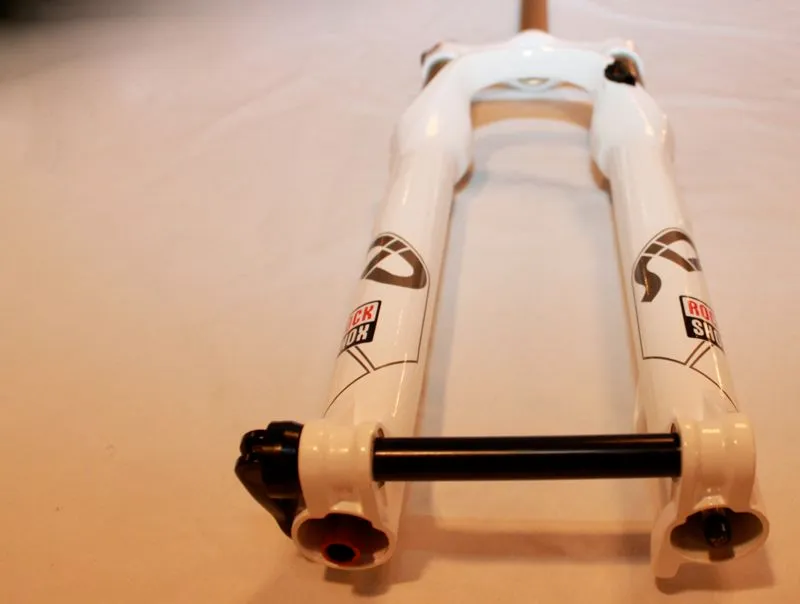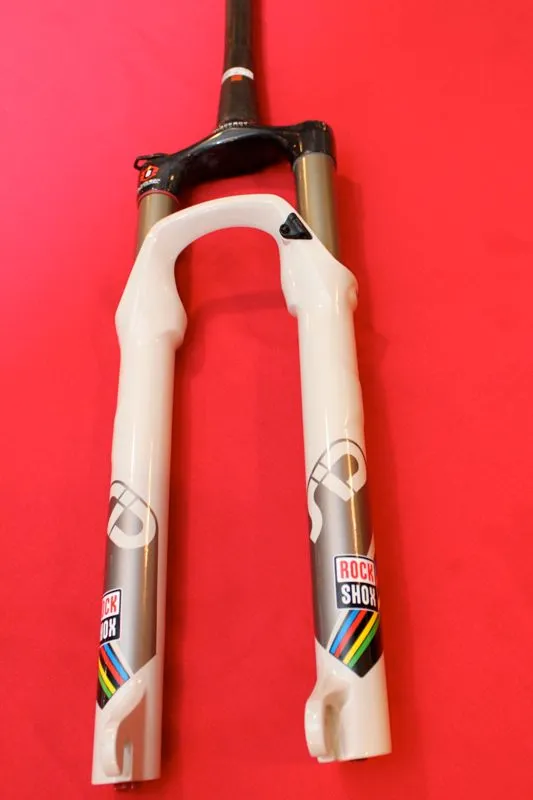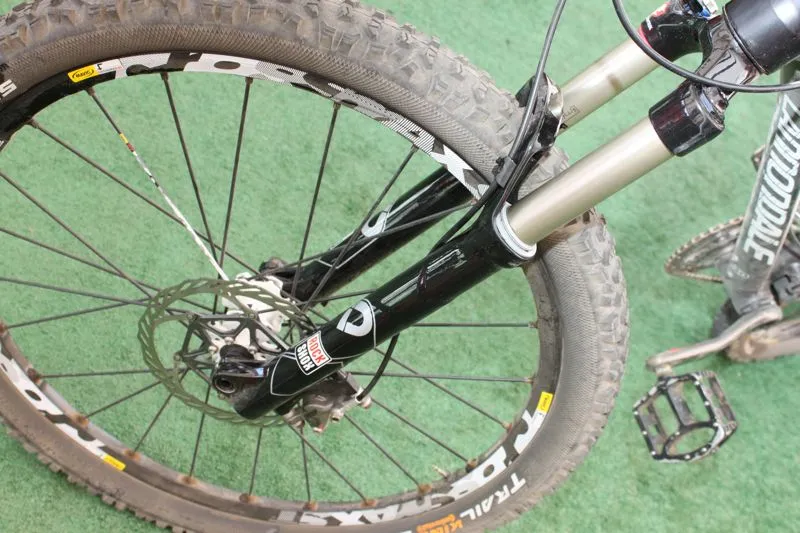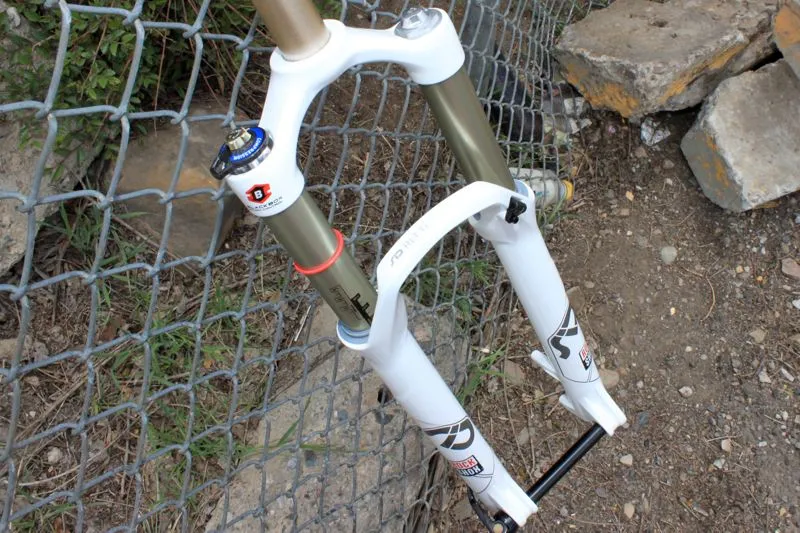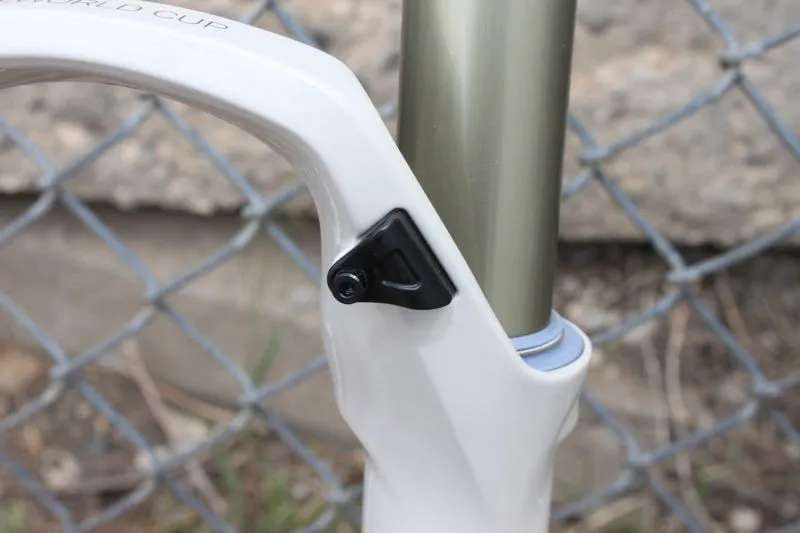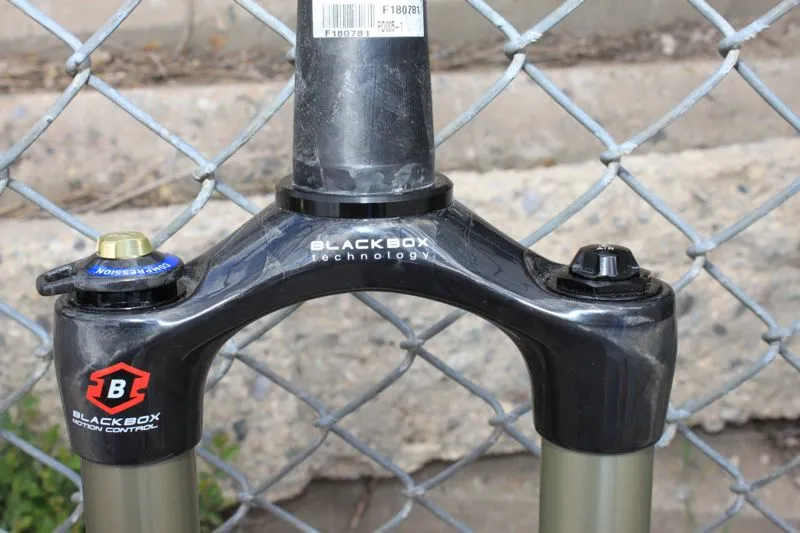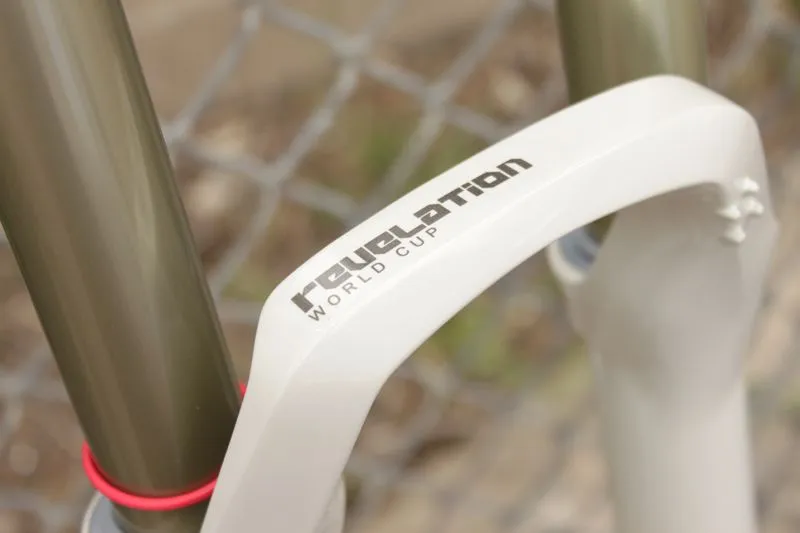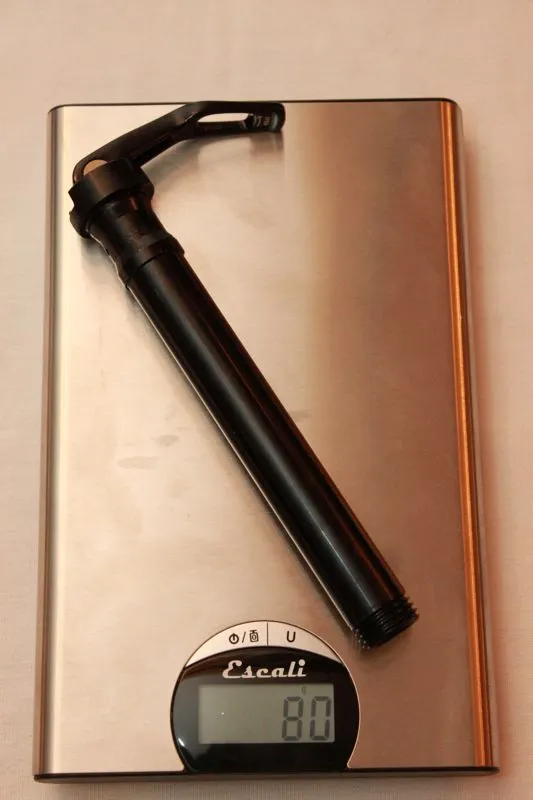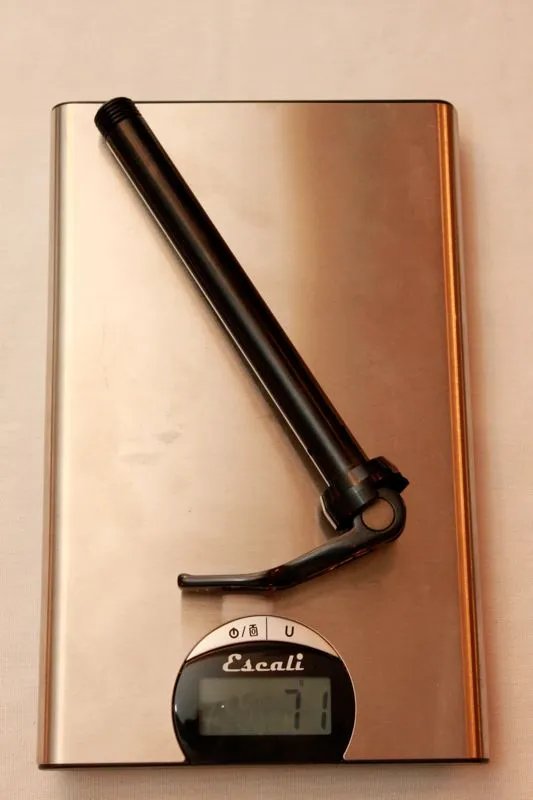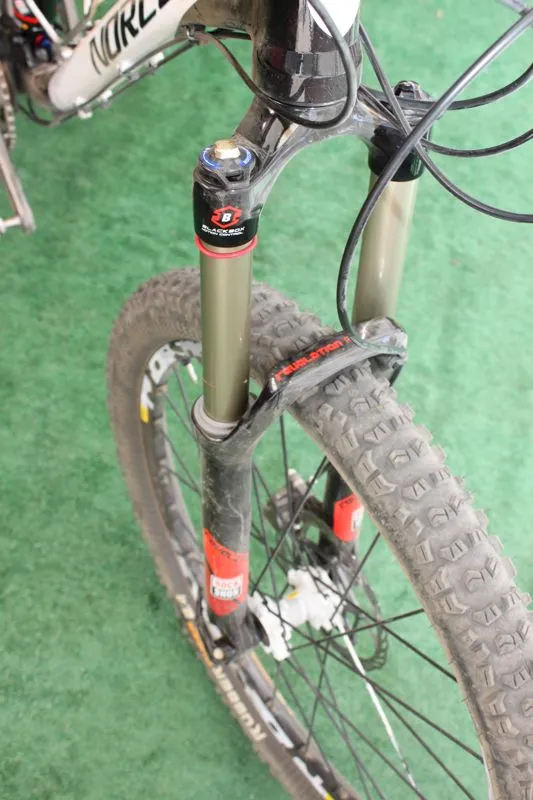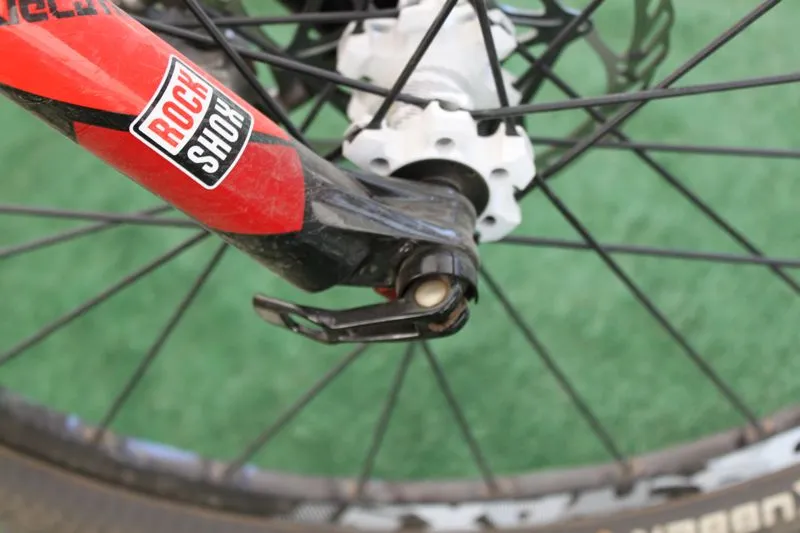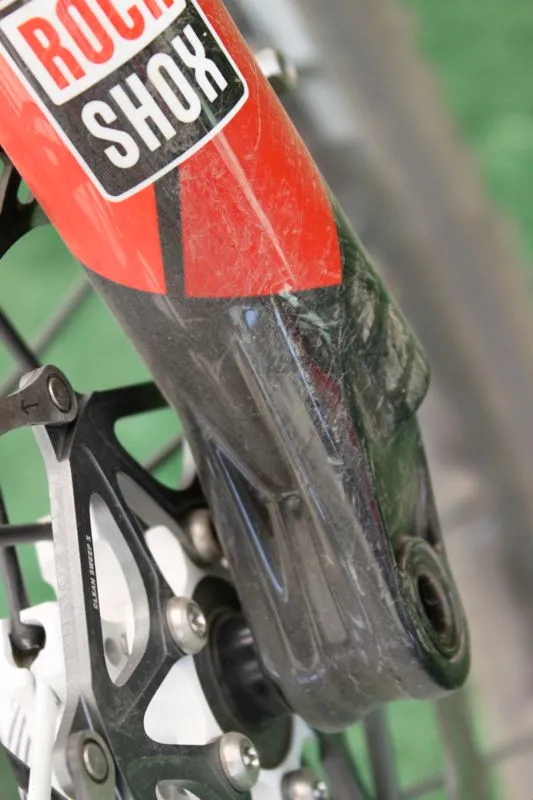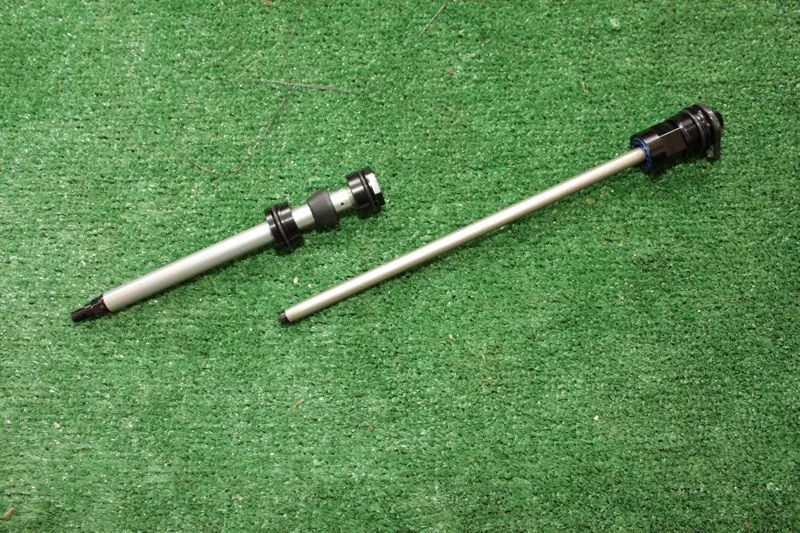Longer travel at lighter weights sums up RockShox’s 2011 cross-country and trail fork line, with the launch of an expanded range of SID, Reba and Revelation models.
Despite a new naming system that is intended to better explain the features of each model, the dampers found in the three forks stay the same. The big news is found in the chassis, with a 20mm travel bump for SID, a carbon tapered crown for the Revelation World Cup and a 29in-wheel Reba with140mm of travel.
Both the SID and Revelation get an optional 15mm through-axle, and RockShox are introducing a new adjustable-travel air spring in Revelation called Dual Position Air.
Taking SID to 120mm
With an additional 20mm of travel and an optional 15mm through-axle, RockShox’s new SID 120 can take on more trail than ever before. It’s funny to think that when the original 63mm-travel SID was introduced, 120mm was considered too much for anything but a ‘gravity bike’.
“SID is an iconic product for us,” said Sander Rigney, RockShox's product manager for cross-country and trail suspension. “For most of the race circuit, when they think of RockShox, they think of SID.
"It moved from being a cross-country race fork to, with the introduction of the new SID in 2008, more of a cross-country race fork that can also be aggressively ridden. As we see more trail bikes come into the market at travels of 120mm with a focus on light weight, we wanted to make a SID that was appropriate for that rider as well.”
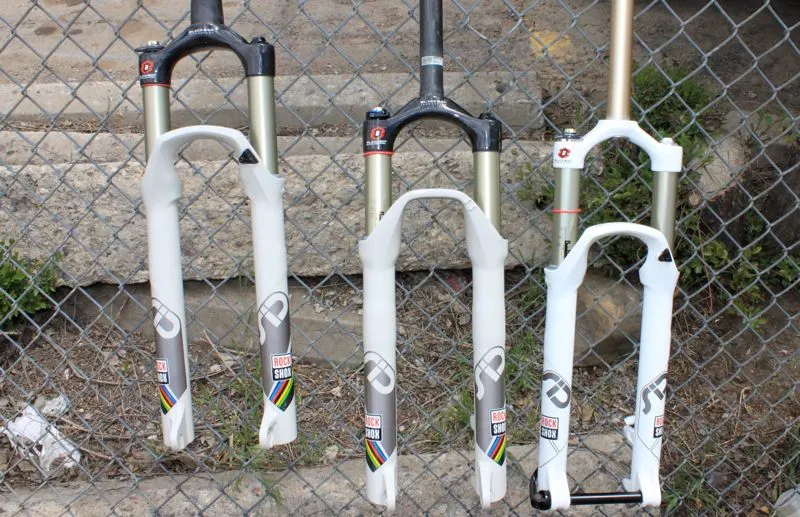
L-R: SID 100/120mm World Cup (1,365g), SID 80/100mm World Cup (1,345g) – both in Keronite Grey – and SID 100/120mm with 15mm through-axle (1,590g)
Because the additional travel required a proportionate increase in chassis strength and stiffness, engineers decided to split the SID line in two. The new 120mm-travel version (travel can be reduced to 100mm) is considerably different to the original 80/100mm model, which remains in the line with an unchanged chassis.
The bump up in travel required a heavy redesign of the fork’s structure. Internally, SID still uses RockShox’s Motion Control damper – which has been proven in the longer-travel Reba and Revelation – and the Dual Air spring, which gives the rider control over positive and negative air pressure.
Although the new fork is stronger, RockShox engineers worked to keep weight to an absolute minimum. All possible material has been shaved from the Power Bulge bushing supports on the magnesium lowers, which also sport a clean bolt-on cable guide.
The upper tube walls have been thinned and the World Cup version is only offered with a tapered carbon steerer, which shaves 100g compared to the standard 1-1/8in version. Internally, RockShox have gone so far as to drill holes in the bushings to save grams. Rotor size is limited to 185mm on all SID models.
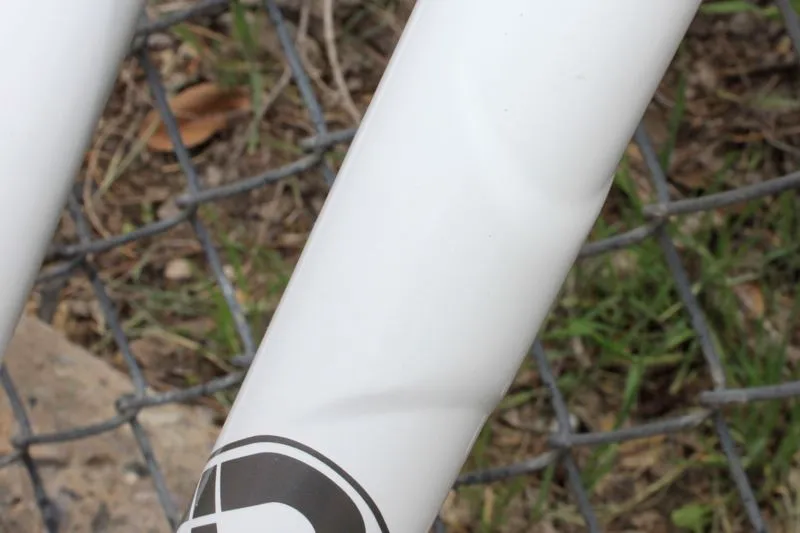
The lower legs of the SID 120 feature scalloped Power Bulges for the lightest possible weight
The name game
The new naming system breaks SID down into four basic chassis options: 80/100mm (unchanged for 2011) with alloy crown/steerer; 80/100mm with World Cup carbon crown/steerer; new 100/120mm with alloy crown/steerer; 100/120mm with tapered World Cup carbon crown/steerer. Both alloy crown models are available with either standard 1 1/8in or tapered steerers. The tapered alloy steerer is the stiffest option.
Once you've chosen your chassis, it's time to think about damping. The more affordable RLT forks get a standard Motion Control damper with a lockout threshold (R=rebound, L=lockout, T= threshold) and single flow rebound damper. RLT Ti models get a BlackBox Motion Control damper with a high-speed compression circuit, and XX forks get an XLoc XX damper. World Cup forks are available with BlackBox or XX dampers. All models except RLT feature RockShox's Dual Flow rebound damper.
The World Cup models of SID and Revelation also get a new magnesium finishing treatment called Keronite Grey, which was developed by the Russian aerospace industry and is much like anodising, in the sense that it permeates into the magnesium as well as coating it. The surface is then decaled and clear coated with a solvent-based finish.
The reason RockShox offer the finish as an option on the World Cup level forks is that it saves 20g compared to powder coating. The bells and whistles World Cup SID 120, with its tapered carbon steerer and Keronite Grey finish, weighs a claimed 1,365g (with 9mm quick-release axle), which is only 20g more than the equivalent 80/100mm model.

SID 100/120mm bushings are drilled for ultimate weight savings
Charging cross-country
We rode a SID RLT with PushLoc remote, tapered alloy steerer and 15mm through-axle (OE version, price not available; for reference the RLT Ti with PushLoc, tapered alloy steerer and 15mm axle is $863). The test fork proved buttery smooth, but what impressed just about every rider at RockShox’s 2011 press camp was just how far the new SID can be pushed.
With the tapered crown and through-axle, it charges down the rockiest cross-country downhills you can find. We found ourselves in situations where overall travel limited us before the strength and stiffness of the chassis did; mind you this confidence was coming from a 3.3lb fork.
For the non-World Cup calibre racer, we can’t think of any reason why anyone would want the old 80/100mm chassis or even the new one sans 15mm axle – the gains from the tapered steerer and through-axle, not to mention the 20mm of extra travel, are just too great. 2011 SID models will range in price from $633-$1,188 . SID 120 starts at $750. (UK prices for all forks TBC.)
Ah ... Reba
With SID available in 120mm-travel with a 15mm through-axle and Revelation weights reduced to as low as 3.5lb, it’s hard to understand why Reba is still around. That is, unless you’re into 29ers. Reba is unofficially RockShox’s big-wheeled baller. And the big news on this front is the addition of a 140mm-travel option for 29in wheels.
This option is only available with a tapered alloy crown and 20mm through-axle, but it comes with the Dual Air spring and the option of BlackBox Motion Control or standard Motion Control dampers, with or without threshold adjustments. Even with the through-axle, the 140mm Reba RLT Ti weighs a respectable 1,869g (4.1lb, claimed) and costs $720.
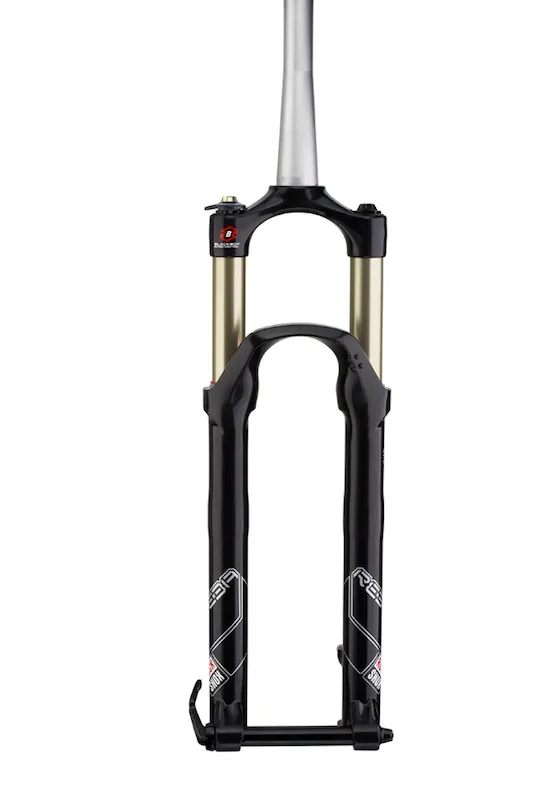
Reba's new Flash, a version with tapered steerer, 20mm Maxle Lite and 140mm travel
The RLT Ti and XX versions come with Dual Flow rebound dampers. Besides the 140mm version, which can be stepped down to 130mm with a travel-adjust spacer, RockShox will offer an 80/100/120mm model and 90-120mm U-Turn Air model. The latter two will be available in 26in wheel versions too. 2011 Reba models will range in price from $525-$810.
Refining Revelation
At first glance, the new Revelation World Cup appears to be the highlight of the range, with its carbon tapered steerer and optional Keronite Grey finish, weighing in at just 1,570g. However, the biggest development for Revelation is the new optional Dual Position Air travel-adjust air spring. This adds roughly 100g but allows 90-degree lever flick to drop the fork about 30mm into its travel. The change also reduces the air spring’s rate, making it slightly suppler.
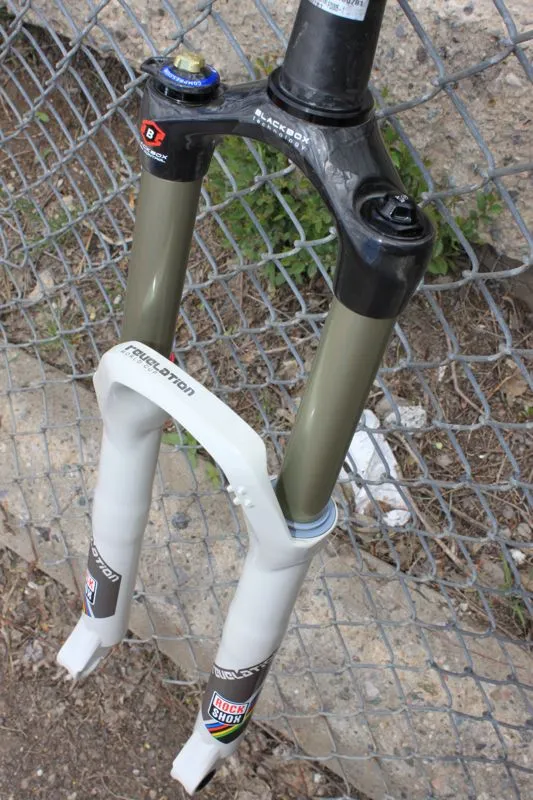
Revelation World Cup with a 20mm Maxle Lite through-axle
Dual Position Air proves to be an ideal way of quickly and easily shortening a 150mm-travel fork on steep climbs and proves more useful, in our opinion, than a lockout. The system is reasonably light, simple and easily user or dealer serviceable.
The spring works much like the Solo Air found in the Boxxer World Cup downhill fork, in that it automatically fills and equalizes the air chamber with one valve, but it retains the suppleness of a Dual Air system. Dual Position Air is an option for Revelation; otherwise the models are equipped with the two-valve Dual Air system.

Dual Position Air is activated by a lever on the top of the left fork leg
Revelation is available with the same damper options as SID – XX, RLT Ti and RLT – with the addition of an RL, which offers a firm lockout with blow-off instead of a gate-adjustable lockout. All of the 2011 Revelation models feature Dual Flow rebound.
“Dual Flow rebound is a system that has two separate rebound circuits,” said Rigney. “It has a beginning stroke rebound circuit, which is what you’re adjusting externally, and a separate circuit for ending or deeper stroke rebound. The importance of those two circuits is that ending stroke rebound circuit allows it to recover more quickly when it’s deeper in the stroke. It’s a rebound change, but typically what you’re going to feel is improved compression. The fork is going to absorb repeated bumps much better.”
Climbing Revelation
We spent two hours on a Revelation World Cup with Dual Position Air, a BlackBox damper and 15mm axle ($1,090), and while its refinements weren’t as jaw-dropping as on the SID – largely because we've spent lots of time on a 2010 20mm axle version – the fork worked exceptionally well and the new travel adjuster was highly appreciated. The bolt-on brake housing guide (15mm axle only – 9mm and 20mm lowers still require a zip tie) was a bonus too.
Weight was a virtual wash, because the savings of the carbon crown were offset by what the travel adjustment added. The easy flip of the travel adjuster made climbing – and especially sneaking around steep 180-degree switchbacks – much easier and in a few cases it was the difference of making the turn or not. If you climb steep pitches on your trail bike, you’ll likely have a great appreciation of Dual Position Air. 2011 Revelation models will range in price from $517-$1,151.
